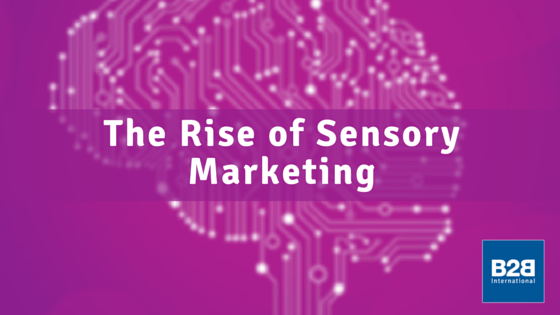
More than ever, consumers and businesses alike are inundated by advertisements from a range of media. All this marketing has had a “wear and tear” effect on our attention and receptiveness to the messages being communicated. We have become less susceptible over time to traditional advertisement methods. As a result, marketers are challenged with differentiating their marketing amid the clutter, colours and sounds of everyday life.
One emerging strategy is the use of sensory marketing. This is a form of marketing that engages the consumers’ senses and aims to affect their perception, judgement, and behaviour. The theory behind why sensory marketing could be effective is “embodied cognition”. This is the idea that “without our conscious awareness, our bodily sensations help determine the decisions we make.”
A recent article published by the Harvard Business Review looks at research being conducted in this field and highlights examples of sensory marketing that on the surface may not seem like marketing at all.
Sight
The traditional sense used in marketing is sight. A large percentage of the information people retain is received visually. This type of marketing enhances brand image, recall and recognition, colour, and pattern. Examples of brands that are easily recognisable are Coca-Cola and Nike.
Sound
Sound in marketing is increasing in popularity. Sound can affect mood and behaviour, which in turn affects a buyer’s purchasing decisions. This is not a new idea: brands have been using sound to increase recognition for years. Take Sharpie pens, for example. The pens make a distinctive “scratch” sound that can be easily recognized. In the automotive industry, BMW amplifies the sound of its engines through the car speakers even when the audio is turned off.
Touch
Touch in marketing can engage the consumer and elicit a positive emotional response by touching a product. Olay has engineered their cream to feel warm when applied to the skin, despite the fact that this has no impact on the product’s functionality. Hershey’s has long claimed that customers experience “tactile pleasure” by unwrapping a Hershey Kiss.
Smell
More recently, marketers have targeted their audience’s sense of smell. Smell can be a strong emotional stimulant, often evoking a specific memory. Dunkin Donuts has launched a trial in South Korea, in which the Dunkin Donuts jingle plays on a municipal bus. At this time, the atomizer releases a coffee aroma (thus simultaneously targeting the bus patrons’ senses of smell and sound). The chain has reported increases in coffee sales close to bus stops since the trial.
Taste
Taste marketing has primarily been implemented in the food industry, where tasting samples is common practice. Companies have been challenged by hygiene and other issues associated with lickable or edible marketing materials. Others however, have successfully launched taste-based marketing campaigns, or altered products in ways similar to BMW with sound and Olay with touch. Welch’s Grape Juice for example, experimented with lickable strips in People Magazine. A leading mouthwash brand focused on enhancing the stinging sensation from mouthwash that users had come to expect, despite the fact that this did not affect the strength of the product.
Does sensory marketing have a place in B2B marketing?
Sensory marketing certainly has a place in B2B marketing. While in B2B marketing sight remains the most impactful form of marketing, the other four senses provide opportunities for companies to stand out. Connecting to potential customers with their senses can foster a feeling of trust and strengthen the relationship between customer and provider. Connecting to customers on an emotional level, even in B2B markets, can increase brand awareness, engagement, loyalty and advocacy.
Final thought: how senses affect market research
Research conducted by Zhongshan University in China suggests that temperature impacts our emotions and attitudes, and even the ways in which we interact with others. This of course has significant implications for research; in particular, face-to-face methodologies such as focus groups. The research found that warm ambient temperatures prompted people to conform to a crowd; this could lead to stronger in-group bias during focus groups. Another study conducted by Lawrence Williams of the University of Colorado at Boulder and John Bargh of Yale found that participants who briefly held a warm beverage were more likely to think that a stranger was friendly and were more open to discussions.
In a world full of obtuse, often “in your face” marketing campaigns, the subtle art of sensory marketing may just be the key for brands battling for that crucial point of differentiation. Go on: you know it makes sense…


